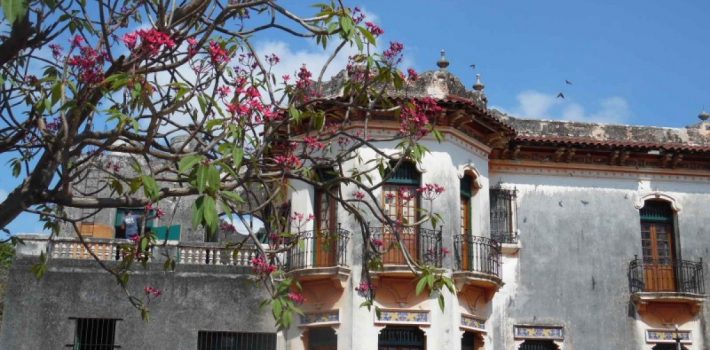García Ginerés Neighborhood
Colonia García Ginerés in Merida
Originally this area was the land of a hacienda called “Datil y Limón” (Date and Lemon), located far outside of Merida. In the late 19th Century, the hacienda was bought by Don Cosme Angel Villajuana and named San Cosme after himself and his patron saint. In 1904, a Spaniard with real estate acumen, bought the hacienda from Don Cosme, partitioned it and sold the lots. His name was Señor Don Joaquín García Ginerés, and when he died in 1915, the area was named after him. When Don Joaquín first started selling these plots, people were afraid to buy so far out of town. Joanna Rosado, author of ´Tomando agua del pozo¨, tells how when she moved to Merida in the 1960s, García Ginerés was still far out of town and crisscrossed by dirt roads.
Today, García Ginerés is a mostly residential area, cut down the middle by the busy, one-way Avenida Colón. The streets are wide, and the houses are a mixture of old and new, though most are less than fifty years old. There are elegant expensive homes and cheaper less grand houses as well, but in general, the area is an upper middle class enclave. In the physical and cultural center of the colonia, at the corner of Calle 20 and Avenida Colón and Calle 20, is Parque de Las Americas, a tree-filled park in four quadrants that was built in a Mayan Art Deco style (also seen in the Monumento a la Patria on Paseo de Montejo) and finished in 1946.
Throughout the park are monuments to all the different countries of North and South America, in a style that pays homage to the Mayan culture in direct opposition to the area’s heritage of Spanish conquest. The park was built to represent the unity of the American people, pre-Hispanic cultures and socialist ideals. The park has a large fountain in one quadrant, a performance space with a concha (half-shell) open-air auditorium in another and the Jose Martí cultural center in a third. The fourth quadrant is fenced off and reserved as a children’s play area. Our friends have told us that there was once (and probably still is…) a cenote underneath the concha. Today, residents enjoy the park for sitting in the shade, attending cultural events, and walking or running around the perimeter for exercise. On weekends, the park is often the site of athletic or cultural events.


Leave a Comment